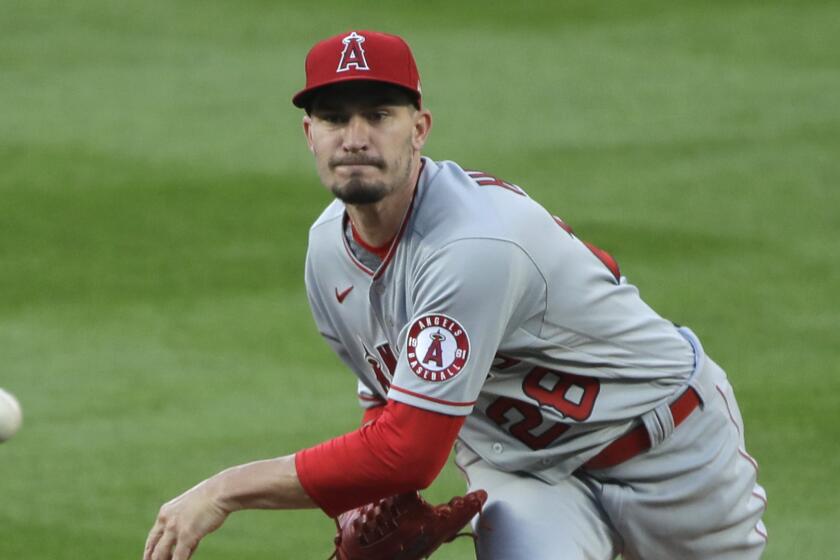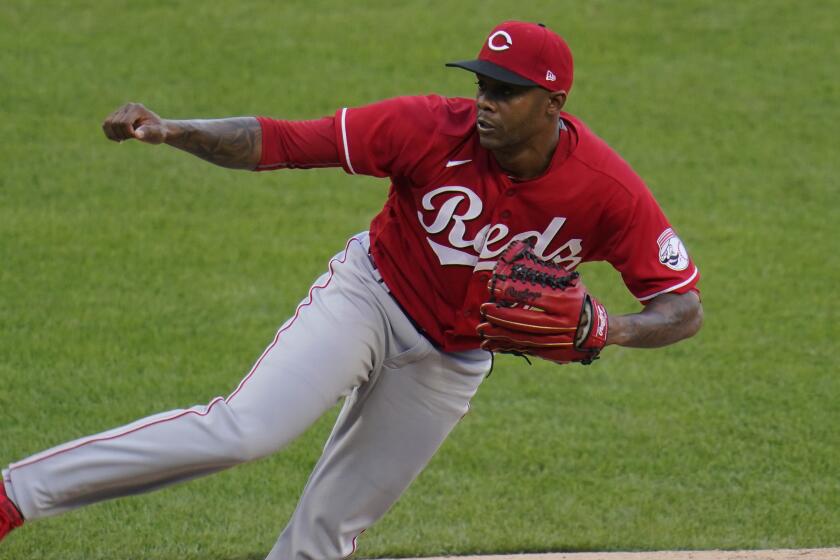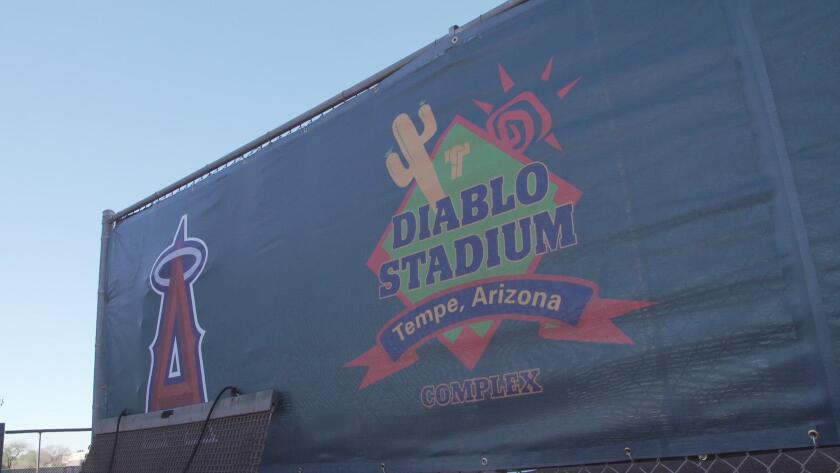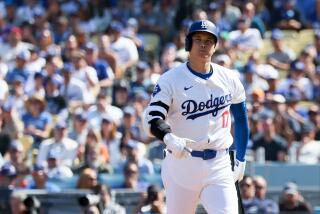Angels two-way star Shohei Ohtani is happy to be free of restrictions on his use
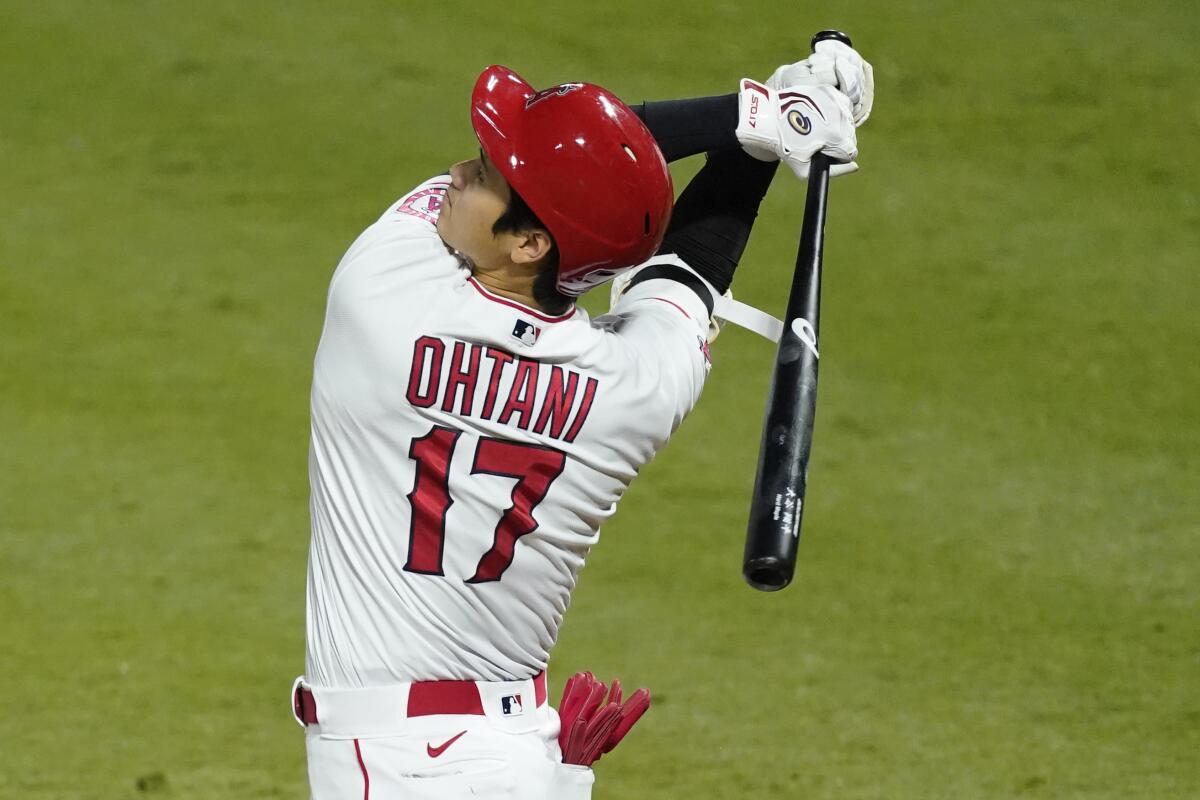
- Share via
Angels manager Joe Maddon has only one rule this spring when it comes to Shohei Ohtani: There are no rules.
Or, at least, far fewer than the two-way star has followed in the past.
Entering his second season with Ohtani, Maddon sees such an approach as the best way to get the 26-year-old back on track after he’s been limited by injuries and inconsistency throughout his brief MLB career. Ohtani has pitched only four innings since June 2018 and last season posted a .190 batting average and .657 on-base-plus-slugging, the second straight season it declined.
“He needs to go out there and just be a baseball player without a lot of limitations,” Maddon said. “I really don’t want to build in a lot of ‘Shohei rules.’”
From the time Ohtani entered Major League Baseball in 2018, his usage has come with specific restrictions. For the first half of his rookie season, he was kept to a schedule of pitching once a week and hitting only three to four times between starts — a plan the Angels explained to Ohtani while recruiting him to sign with the organization, and that mirrored Ohtani’s routine in Japan’s Nippon Professional Baseball league.
But after injuring the ulnar collateral ligament in his right throwing elbow midway through 2018 (he pitched only once after June 6), Ohtani underwent Tommy John surgery that required a meticulous rehab and limited him to exclusively hitting in games until last summer.
Angels starter Andrew Heaney took a deep dive into advanced pitching analytics this offseason, purchasing a Rapsodo machine that measures just about everything.
Following a season-ending knee operation in September 2019 — after which he endured another offseason rehab that restricted his training program and weight-lifting routine — he began last year’s pandemic-delayed campaign back on a once-a-week pitching schedule but made only two starts before being shut down as a pitcher once again because of a right forearm injury.
After reflecting upon all that history this offseason, Maddon arrived at spring training this week with a straightforward plan for managing Ohtani.
“I don’t want to tell him what he can or cannot do, and neither does [general manager] Perry [Minasian],” Maddon said, adding that Ohtani is a “full-go” pitching-wise this spring.
“So let’s watch him. Let’s talk to him. Let’s communicate with him. Let’s permit him to go out there. He was very successful in Japan kind of doing that thing. So let’s just see what he does, and watch, and make our evaluations and adjustments based on what we’re seeing.”
That process began Thursday. Ohtani had his first bullpen session of the spring, throwing 27 pitches with a maximum velocity of 90 mph (he said later his arm feels “much better than last year” and that he wasn’t worried about the relatively low pitch speeds, given it was his first session of the spring), and met with Maddon to discuss the manager’s philosophy of eliminating restrictions.
“We talked about how we need to communicate more with each other and earn each other’s trust and get to know each other better,” Ohtani said through his interpreter. “I feel really good about not having restrictions.”
The only thing Maddon wants from Ohtani is “to prepare himself as a pitcher first” as he goes through the spring, which Maddon believes is the more difficult of the two roles.
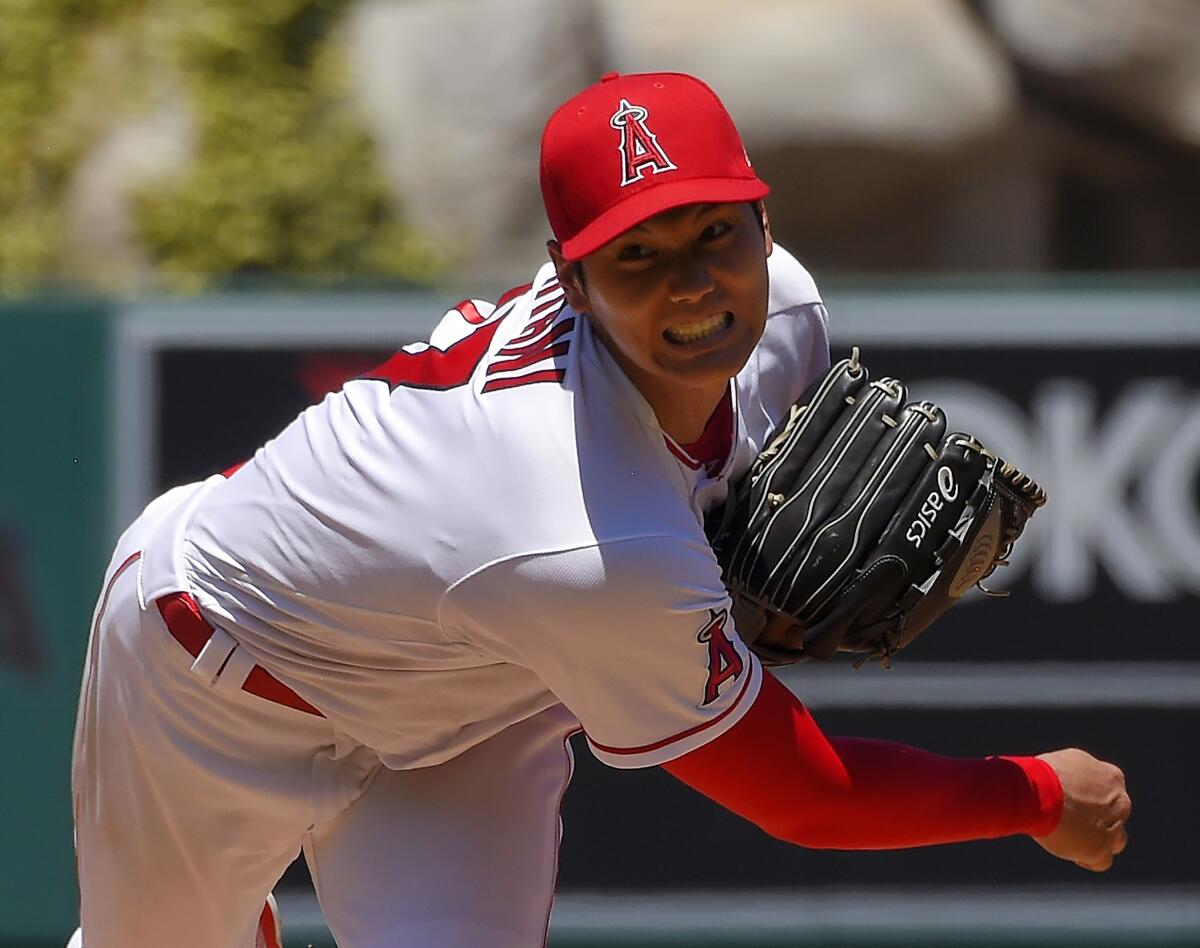
“That doesn’t mean he’s gonna hit less or play less often when he’s able to,” Maddon said, adding: “I just want him to be scheduled and think pitching first, so when he walks in the door he knows exactly where to look and how to get ready for the day, or even the day before so he has an idea how to plan.”
Maddon is passionate about this approach because he believes deeply in Ohtani’s abilities. He reiterated this week that Ohtani “can be one of the greatest players of his generation, given the opportunity” and that his goal as manager is simply to “not get in the way, and not interfere and not give him all these predisposed thoughts to deal with.”
“What he needs from me is my support,” Maddon continued. “Think about it as a kid, when you’re supported in a way that you feel comfortable just throwing yourself out there, knowing that there’s somebody there with the net to pick you up if it’s not working right. That’s what I need to be, or I need to do. ‘Shohei, go ahead, man. Go ahead and be the best athlete in baseball. Go ahead, be that guy.’ So that’s the plan.”
Ohtani thinks he took steps in that direction this winter. He told Japanese media members he started throwing bullpen sessions earlier and incorporated more live batting practice than normal.
New Angels general manager Perry Minasian bolstered the roster during the offseason, but did not add a high-priced free agent or make a blockbuster trade.
He changed his diet after learning which foods were best for him to eat through blood tests.
He got his weight back up to about 225 pounds and focused on strengthening his lower half, which he hopes will accentuate the mechanical tweaks he made to his swing.
And he’s been throwing with a black band below his right elbow that he said will collect data and measure the daily stress on his throwing arm to “figure out what’s best for me throughout the year, such as pitch count and what to do between starts.”
Asked if he feels pressure to finally prove he can be a full-time two-way MLB player this season, he brushed off the idea.
On that point, his view aligns with Maddon’s: He just wants it to happen naturally.
“I want to have fun and just feel good out there, and do my job when it’s given,” Ohtani said. “Hopefully, I want to make Joe use me as much as possible.”
- Share via
More to Read
Go beyond the scoreboard
Get the latest on L.A.'s teams in the daily Sports Report newsletter.
You may occasionally receive promotional content from the Los Angeles Times.

